 Technology peripherals
Technology peripherals
 AI
AI
 Turtle-inspired robots developed at the University of California may be used for future space exploration
Turtle-inspired robots developed at the University of California may be used for future space exploration
Turtle-inspired robots developed at the University of California may be used for future space exploration
What does a robot that can shuttle freely underground look like?

Sorry for misplacing it, but it is actually like this.

The appearance is neither smooth nor soft, but it is said to be the first machine that can "swim" under more than ten centimeters of sand.
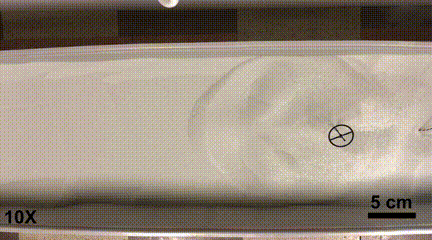
The two arms moved very fast.
Of course, "Sandy" is not just for showing off skills. This robot can be controlled through WiFi and can be used in areas such as environmental monitoring, granary inspection and disaster response.
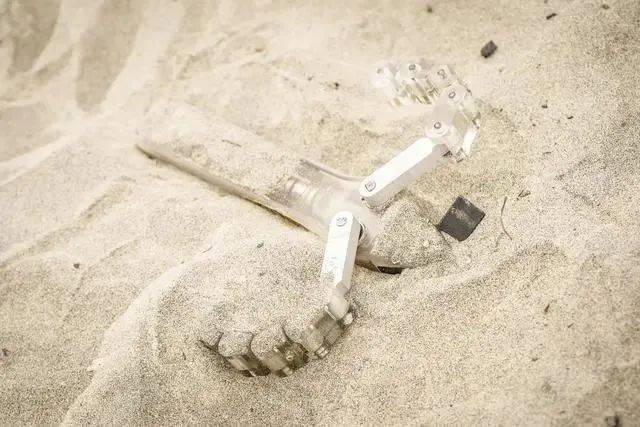
This is the result of a number of experiments conducted by a team of robotics experts from the University of California, San Diego, and it also opens up a new idea for the research of underground robots.
▍How to "swim" under the sand?
So, how does this robot, which is neither soft nor smooth, swim underground?
You must know that swimming in sand has much greater resistance than swimming on the ground or in water, and it is very easy to be damaged in the process. This is one of the main reasons why robots have never conquered the environment below.
To this end, researchers began to look for inspiration in creatures in nature.
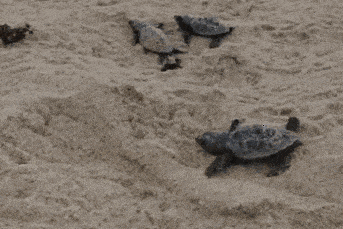
The first thing that comes to mind are baby turtles. When baby turtles hatch from eggs buried in the ground, they crawl through the sand using their powerful feet as paddles.
With the source of inspiration, the robot’s two arms also imitate the oversized flippers of a small turtle.

As the robot moves under the sand, it pulls its arms forward, close to the body, and then back out to the sides, like a swimmer

However, researchers soon discovered that when the robot continued to flip its arms and move forward, the robot would naturally move upward due to the resistance of the sand, limiting its use.
Therefore, they flexibly changed the head design of the "Turtle" and designed it into a wedge-shaped head to reduce drag
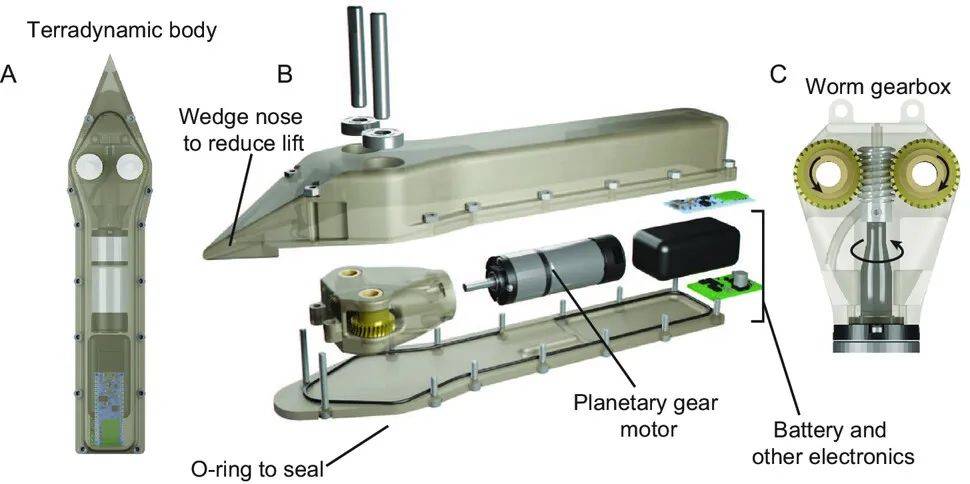
Also equipped with a set of "foil-like surfaces" mounted on either side of the robot's nose, this device acts like a submarine's dive plane, pushing the robot downward to offset its upward trajectory.
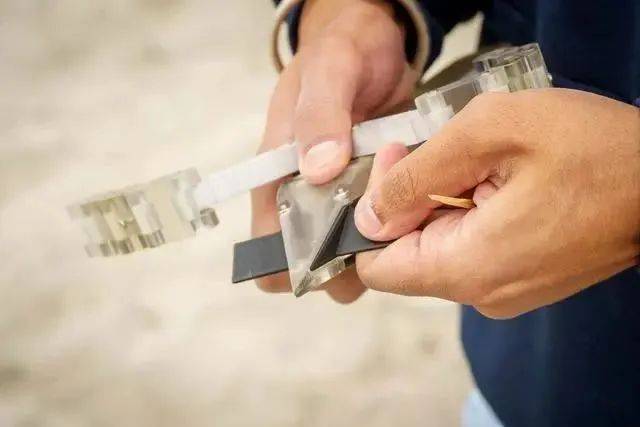
In addition to maintaining forward horizontal movement, the robot can turn left or right in the sand, and it can be remotely controlled via Wi-Fi to turn left or right by independently varying the thrust of its attachments. While its footrests are currently fixed-angle, they could be adjusted in the future to allow the robot to move up and down as needed.
▍What should I do if I encounter an obstacle?
The movement problem is solved, but what should we do if we encounter obstacles?
In fact, in addition to swimming, the robot's two arms also have the function of detecting obstacles. It does this by sensing the increasing resistance of the surrounding quicksand while moving. When it senses an obstacle, it takes appropriate steps to avoid collision or go around the obstacle.
However, currently only obstacles on the sides and above the robot can be detected. As for the front and bottom, the developers are still making continuous improvements. Future versions of the "Little Turtle" may have more powerful obstacle sensing and obstacle avoidance capabilities.
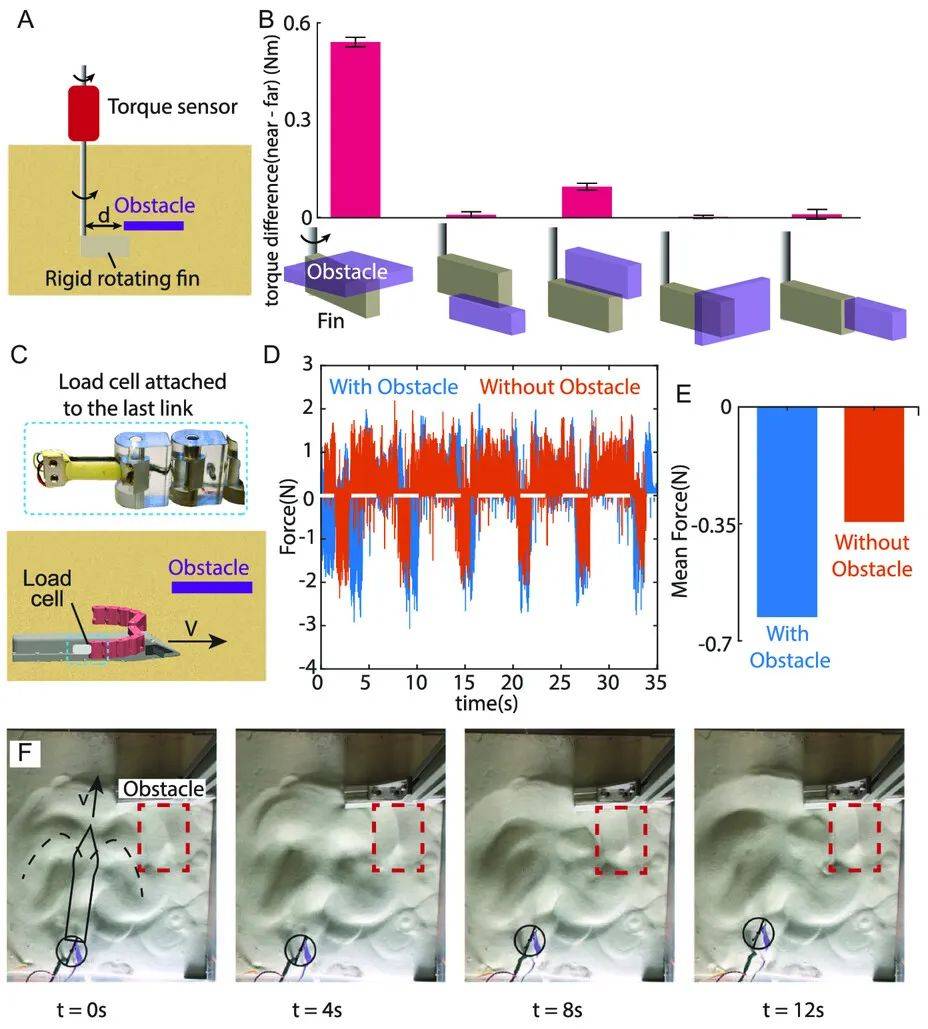
Currently, the "Little Turtle" robot can move horizontally on the sand at a speed of about 4 meters per hour at a depth of 12.7 centimeters. However, its speed is very slow, similar to the moving speed of other underground animals such as worms and clams.
Although relatively slow, this speed may be sufficient for some tasks, especially where careful movement is required to avoid damaging the surrounding environment or sensor equipment.
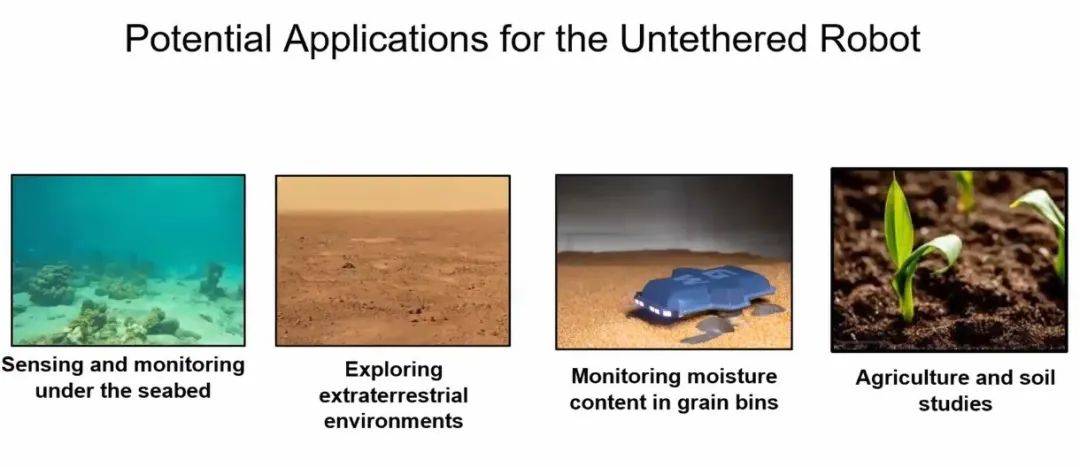
Developing such a robot faces many technical challenges, including mechanical design, sensor technology, control systems and software development. With the continuous advancement of technology, the possibility of robots performing tasks in various complex environments will continue to increase
▍Further improve the speed and may be used in space in the future
Currently, people don’t know enough about how robots with limbs move underground. Small robots like this not only open up new ideas for the design of underground robots, but can also be used in many scenarios, such as soil sampling, Underground exploration, search and rescue work, etc.

The research was published in Advanced Intelligent Systems under the title "Toward Robotic Sensing and Swimming in Granular Environments using Underactuated Appendages" ).
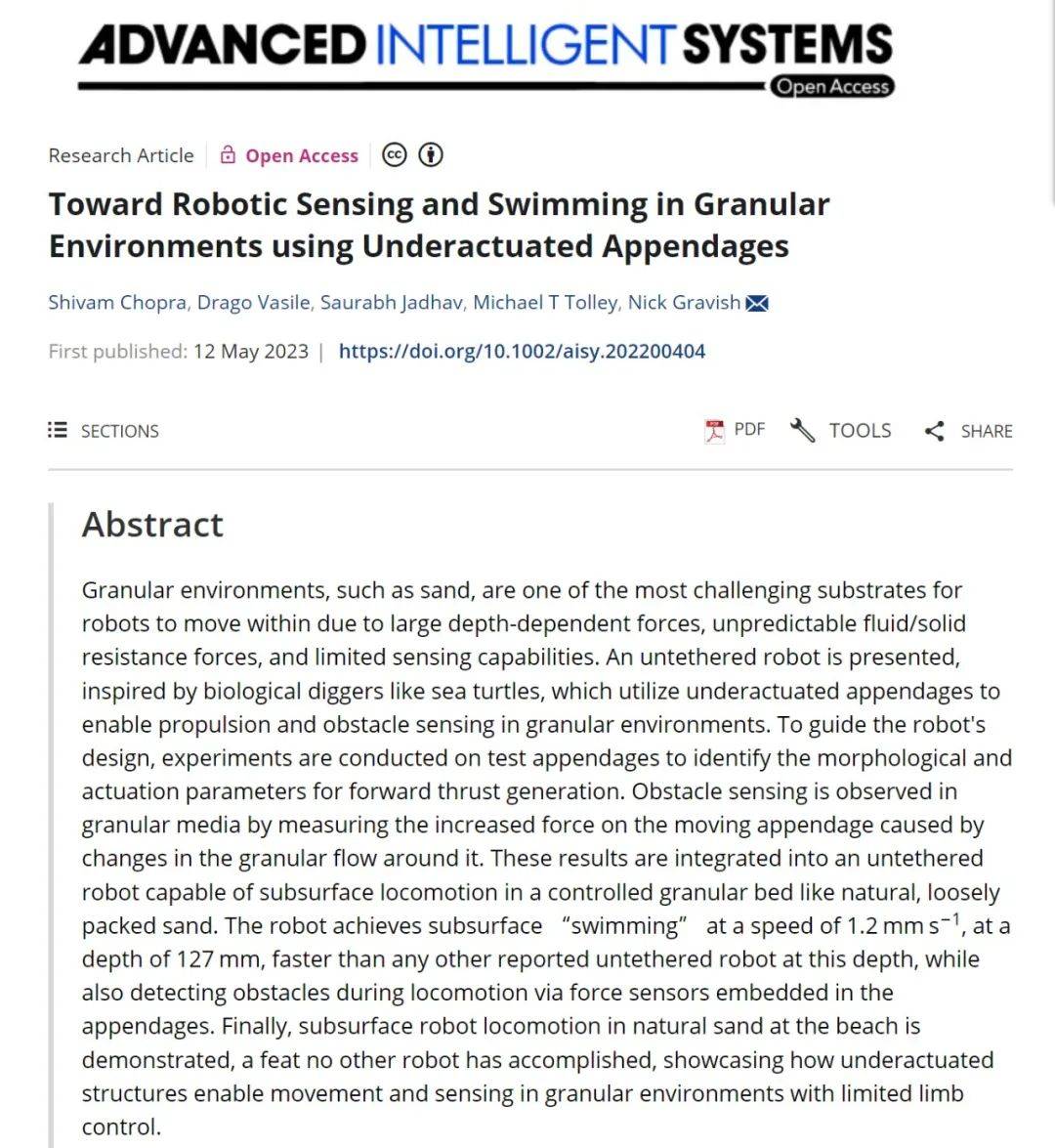
The robot has been tested in a tank filled with sand in the laboratory and in the sand of a coastal beach in La Jolla, California. In the future, researchers will further optimize its swimming speed in the sand and increase the angle of its body so that it can achieve all-round underground movement forward, backward, left and right, and up and down

In the future, the application of robots may open up new avenues for space exploration. This is because robots can not only perform various tasks in space, but also immobilize themselves in the medium, which makes sense in the low gravity environment of space. Therefore, robots have huge potential in space applications
The above is the detailed content of Turtle-inspired robots developed at the University of California may be used for future space exploration. For more information, please follow other related articles on the PHP Chinese website!

Hot AI Tools

Undresser.AI Undress
AI-powered app for creating realistic nude photos

AI Clothes Remover
Online AI tool for removing clothes from photos.

Undress AI Tool
Undress images for free

Clothoff.io
AI clothes remover

Video Face Swap
Swap faces in any video effortlessly with our completely free AI face swap tool!

Hot Article

Hot Tools

Notepad++7.3.1
Easy-to-use and free code editor

SublimeText3 Chinese version
Chinese version, very easy to use

Zend Studio 13.0.1
Powerful PHP integrated development environment

Dreamweaver CS6
Visual web development tools

SublimeText3 Mac version
God-level code editing software (SublimeText3)

Hot Topics
 1386
1386
 52
52
 The second generation Ameca is here! He can communicate with the audience fluently, his facial expressions are more realistic, and he can speak dozens of languages.
Mar 04, 2024 am 09:10 AM
The second generation Ameca is here! He can communicate with the audience fluently, his facial expressions are more realistic, and he can speak dozens of languages.
Mar 04, 2024 am 09:10 AM
The humanoid robot Ameca has been upgraded to the second generation! Recently, at the World Mobile Communications Conference MWC2024, the world's most advanced robot Ameca appeared again. Around the venue, Ameca attracted a large number of spectators. With the blessing of GPT-4, Ameca can respond to various problems in real time. "Let's have a dance." When asked if she had emotions, Ameca responded with a series of facial expressions that looked very lifelike. Just a few days ago, EngineeredArts, the British robotics company behind Ameca, just demonstrated the team’s latest development results. In the video, the robot Ameca has visual capabilities and can see and describe the entire room and specific objects. The most amazing thing is that she can also
 How can AI make robots more autonomous and adaptable?
Jun 03, 2024 pm 07:18 PM
How can AI make robots more autonomous and adaptable?
Jun 03, 2024 pm 07:18 PM
In the field of industrial automation technology, there are two recent hot spots that are difficult to ignore: artificial intelligence (AI) and Nvidia. Don’t change the meaning of the original content, fine-tune the content, rewrite the content, don’t continue: “Not only that, the two are closely related, because Nvidia is expanding beyond just its original graphics processing units (GPUs). The technology extends to the field of digital twins and is closely connected to emerging AI technologies. "Recently, NVIDIA has reached cooperation with many industrial companies, including leading industrial automation companies such as Aveva, Rockwell Automation, Siemens and Schneider Electric, as well as Teradyne Robotics and its MiR and Universal Robots companies. Recently,Nvidiahascoll
 After 2 months, the humanoid robot Walker S can fold clothes
Apr 03, 2024 am 08:01 AM
After 2 months, the humanoid robot Walker S can fold clothes
Apr 03, 2024 am 08:01 AM
Editor of Machine Power Report: Wu Xin The domestic version of the humanoid robot + large model team completed the operation task of complex flexible materials such as folding clothes for the first time. With the unveiling of Figure01, which integrates OpenAI's multi-modal large model, the related progress of domestic peers has been attracting attention. Just yesterday, UBTECH, China's "number one humanoid robot stock", released the first demo of the humanoid robot WalkerS that is deeply integrated with Baidu Wenxin's large model, showing some interesting new features. Now, WalkerS, blessed by Baidu Wenxin’s large model capabilities, looks like this. Like Figure01, WalkerS does not move around, but stands behind a desk to complete a series of tasks. It can follow human commands and fold clothes
 The first robot to autonomously complete human tasks appears, with five fingers that are flexible and fast, and large models support virtual space training
Mar 11, 2024 pm 12:10 PM
The first robot to autonomously complete human tasks appears, with five fingers that are flexible and fast, and large models support virtual space training
Mar 11, 2024 pm 12:10 PM
This week, FigureAI, a robotics company invested by OpenAI, Microsoft, Bezos, and Nvidia, announced that it has received nearly $700 million in financing and plans to develop a humanoid robot that can walk independently within the next year. And Tesla’s Optimus Prime has repeatedly received good news. No one doubts that this year will be the year when humanoid robots explode. SanctuaryAI, a Canadian-based robotics company, recently released a new humanoid robot, Phoenix. Officials claim that it can complete many tasks autonomously at the same speed as humans. Pheonix, the world's first robot that can autonomously complete tasks at human speeds, can gently grab, move and elegantly place each object to its left and right sides. It can autonomously identify objects
 The humanoid robot can do magic, let the Spring Festival Gala program team find out more
Feb 04, 2024 am 09:03 AM
The humanoid robot can do magic, let the Spring Festival Gala program team find out more
Feb 04, 2024 am 09:03 AM
In the blink of an eye, robots have learned to do magic? It was seen that it first picked up the water spoon on the table and proved to the audience that there was nothing in it... Then it put the egg-like object in its hand, then put the water spoon back on the table and started to "cast a spell"... …Just when it picked up the water spoon again, a miracle happened. The egg that was originally put in disappeared, and the thing that jumped out turned into a basketball... Let’s look at the continuous actions again: △ This animation shows a set of actions at 2x speed, and it flows smoothly. Only by watching the video repeatedly at 0.5x speed can it be understood. Finally, I discovered the clues: if my hand speed were faster, I might be able to hide it from the enemy. Some netizens lamented that the robot’s magic skills were even higher than their own: Mag was the one who performed this magic for us.
 Ten humanoid robots shaping the future
Mar 22, 2024 pm 08:51 PM
Ten humanoid robots shaping the future
Mar 22, 2024 pm 08:51 PM
The following 10 humanoid robots are shaping our future: 1. ASIMO: Developed by Honda, ASIMO is one of the most well-known humanoid robots. Standing 4 feet tall and weighing 119 pounds, ASIMO is equipped with advanced sensors and artificial intelligence capabilities that allow it to navigate complex environments and interact with humans. ASIMO's versatility makes it suitable for a variety of tasks, from assisting people with disabilities to delivering presentations at events. 2. Pepper: Created by Softbank Robotics, Pepper aims to be a social companion for humans. With its expressive face and ability to recognize emotions, Pepper can participate in conversations, help in retail settings, and even provide educational support. Pepper's
 Cloud Whale Xiaoyao 001 sweeping and mopping robot has a 'brain'! | Experience
Apr 26, 2024 pm 04:22 PM
Cloud Whale Xiaoyao 001 sweeping and mopping robot has a 'brain'! | Experience
Apr 26, 2024 pm 04:22 PM
Sweeping and mopping robots are one of the most popular smart home appliances among consumers in recent years. The convenience of operation it brings, or even the need for no operation, allows lazy people to free their hands, allowing consumers to "liberate" from daily housework and spend more time on the things they like. Improved quality of life in disguised form. Riding on this craze, almost all home appliance brands on the market are making their own sweeping and mopping robots, making the entire sweeping and mopping robot market very lively. However, the rapid expansion of the market will inevitably bring about a hidden danger: many manufacturers will use the tactics of sea of machines to quickly occupy more market share, resulting in many new products without any upgrade points. It is also said that they are "matryoshka" models. Not an exaggeration. However, not all sweeping and mopping robots are
 American university opens 'The Legend of Zelda: Tears of the Kingdom' engineering competition for students to build robots
Nov 23, 2023 pm 08:45 PM
American university opens 'The Legend of Zelda: Tears of the Kingdom' engineering competition for students to build robots
Nov 23, 2023 pm 08:45 PM
"The Legend of Zelda: Tears of the Kingdom" became the fastest-selling Nintendo game in history. Not only did Zonav Technology bring various "Zelda Creator" community content, but it also became the United States' A new engineering course at the University of Maryland (UMD). Rewrite: The Legend of Zelda: Tears of the Kingdom is one of Nintendo's fastest-selling games on record. Not only does Zonav Technology bring rich community content, it has also become part of the new engineering course at the University of Maryland. This fall, Associate Professor Ryan D. Sochol of the University of Maryland opened a course called "



